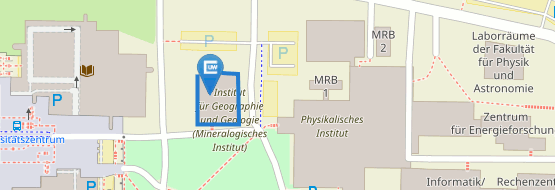Laboratory for geomorphology and soil sciences
Professorship for Physical Geography and Soil Science:
Univ.-Prof. Dr. Birgit Terhorst
Laboratory management:
Dr. Martin Krech
The research and teaching laboratory is part of the department of Physical Geography at the Institute of Geography and Geology and it operates since 2009 after intensive modification and renovation works. The laboratory offers a wide range of instruments for pedochemical, sedimentological, soil mechanical, geomorphological as well as geotechnical analysis. Furthermore, we provide microscopic workstations with digital image analysis. It is thus possible for students to gain substantial analytical knowledge and also important methodical experience during the course. The laboratory forms an important part of the student education within the field of Physical Geography. Practices, methodological courses, and project seminars are in the center of our teaching activity. It is important to know that all kinds of thesis are supervised in our lab facilities. Thus, we offer a career oriented methodological education on the base of analytical knowledge. The lab also works for university partners and it may provide analytical data for external parties for commission works.
Several courses for students in their Bachelors and Masters degrees aim to provide an elementary understanding of working in a laboratory. These include behaviour and organization at the workspace, technical abilities, and routine in working with the equipment. It is also important to get an understanding for the importance of quantitative data collection/surveying to be able to validate as well as refine results of the fieldwork.
By using previously described methods and the subsequent interpretation of results, students are encouraged to validate, deepen and strengthen their pre-existing theoretical knowledge of pedology and geomorphology. In regard of practical use, it is also necessary to convey not only possibilities but also restrictions of norms and regulations for different methods, respectively.
Lectures:
- Bachelor students:
Physical Geography: Methods (04-Geo-MPG 1): Pedological lab methods
- Master studies (Applied Physical Geography):
Soil geographic lab- and microscopy course (04-Geo-MBG 2): practical work for advanced students as part of the Masters` program.


